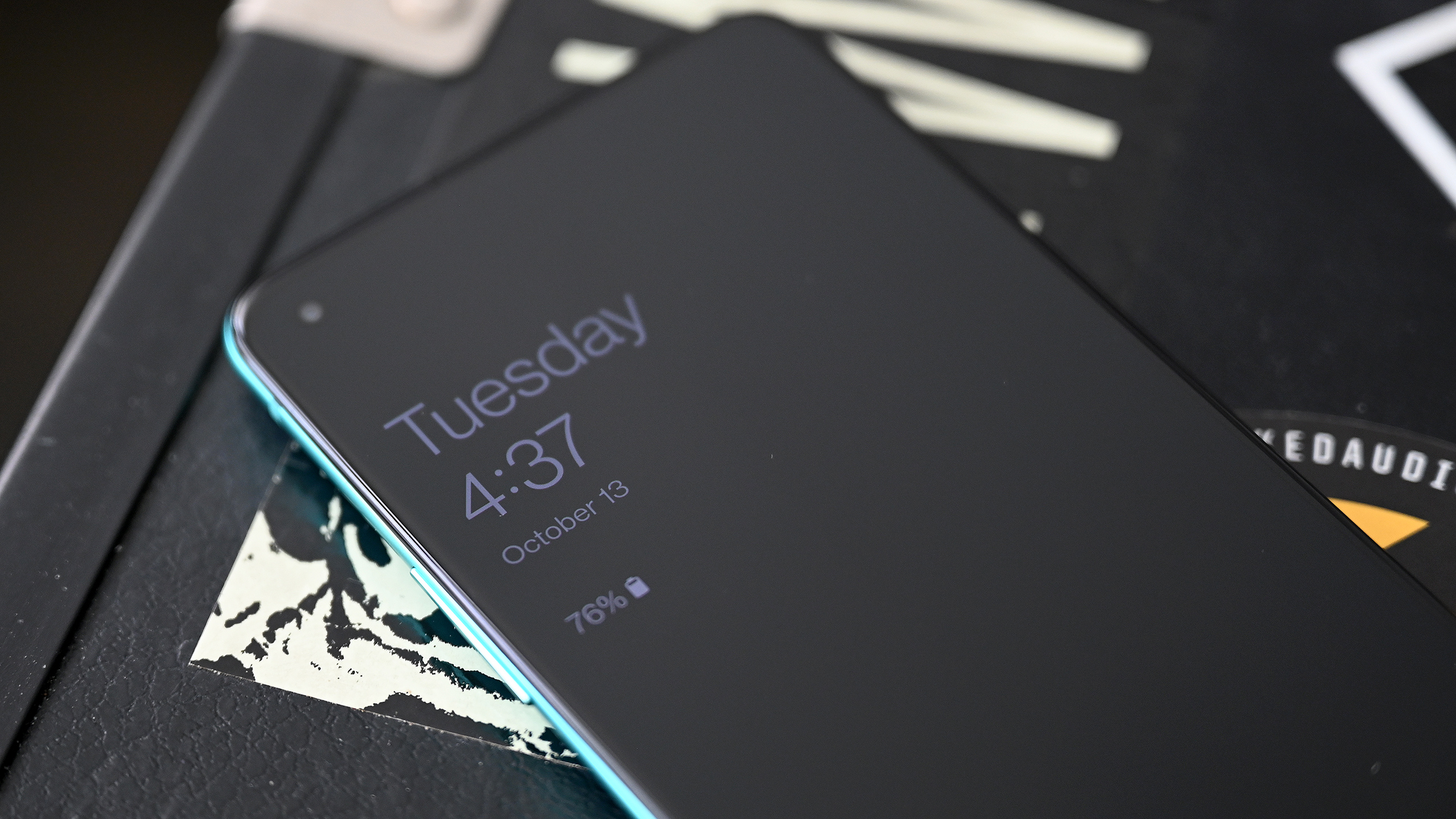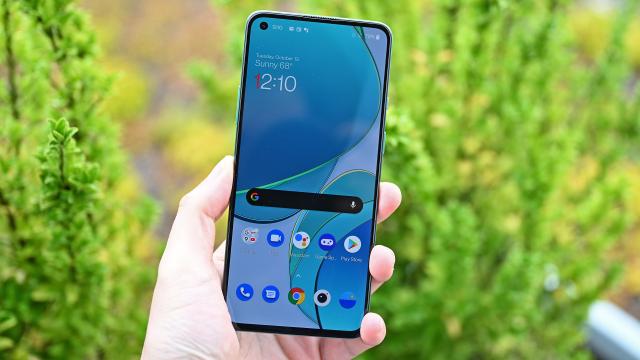Over the last couple of years, OnePlus has sort of had the “budget flagship” phone segment to itself, offering well-built phones with top-notch specs for hundreds less than its traditional high-end competitors. However, with the price of premium phones having risen to $1,500+, especially in 2020, many mainstream phone makers like Samsung and others have made a concerted effort to fill in the gap between their flagship devices and more affordable midrange fare.
This puts OnePlus in a tricky position because, at $US750 ($1,047), the new OnePlus 7 T is facing stiffer competition than ever before. So even though the OP8T is no doubt a solid handset with a number of standout features, it’s not quite the slam dunk value we’re used to seeing from OnePlus.

OnePlus 7 T
What is it?
OnePlus' latest phone refresh for fall 2020
Price
Starts at $US750 ($1,047)
Like
New 120Hz display, thinner/lighter body, super-fast 65-watt wired charging, strong specs and performance
Don't Like
Rear camera module doesn't have a zoom cam; no wireless charging, microSD slot, or headphone jack
Editor’s Note: OnePlus phones are only available via resellers in Australia.
Like the OnePlus 8 that it’s replacing, the OP8T sports a glass-and-metal body available in two colours: aquamarine (seen here) and silver. You also still get OnePlus’ signature alert slider that lets you easily set the phone to vibrate or silent with the flick of finger, along with an optical fingerprint sensor built into its display. The only major bit of design that’s really changed is the OP8T’s rear camera module (we’ll get to that later), which sits off to the side and features a primary wide-angle cam, a new ultra-wide cam, a macro cam, and a monochrome sensor.
The OP8T’s basic specs are pretty much the same too, with the phone powered by a Qualcomm Snapdragon 865 chip, 8 GB of RAM, and 128 GB of storage. And its 2400 x 1080 OLED screen looks just a rich and vibrant as before. However, on the flipside, the OP8T is also missing a lot of the same stuff the OP8 lacked, including a microSD card slot (which seems to have been permanently axed from all OnePlus phones along with headphone jacks) and wireless charging. So once again, we’re looking at a phone with strong performance but with a few common features stripped out compared to some of its rivals. OK, so what’s actually new on the OP8T?
The first big upgrade is a new 120Hz 6.55-inch OLED display, which is up from 90Hz on the outgoing OP8. This puts the OP8T on the same playing field as the OP8 Pro and fancy Samsung Galaxy phones like the S20+ and Note 20 Ultra, while also being one of the biggest contributors to the OnePlus mission of making its phones feel smooth and fast. It really does make doing almost anything on the phone look better, and I expect that throughout the next couple years, 120Hz panels will become a standard feature on all phones above the $1,000 mark.
As a handy new bonus, in conjunction with support for Android 11, OnePlus has also added an Always-On Display mode to the OP8T, which was one of the most commonly requested features from OnePlus users. And while AODs have become pretty common on phones nowadays (particularly phones with OLED displays), it’s nice being able to see stuff like the time and new notifications at a glance without unlocking your phone.
Around back, the OP8T’s cameras have increased from three to four thanks to the addition of a 2-MP monochrome lens, which is supposed to help with colour and depth info. It’s alongside a higher-res 5-MP macro cam, an even wider 123-degree ultra-wide cam, and a 48-MP main cam. Unfortunately, while having a more encompassing view for landscapes is nice, the OP8T’s overall image quality doesn’t seem to have improved that much. It’s not terrible by any means, and in bright light, the OP8T captures rich photos with relatively sharp details. But in the end, it’s still no match for something like the Pixel 5, with Google’s latest phone having a considerable edge in low light.
Meanwhile, on the inside, OnePlus has given Oxygen OS (which is based on Android 11) a thoughtful revamp, once again cutting down unnecessary animations, and, more importantly, moving around a number of UI elements to make the phone easy to navigate with one hand. Oxygen OS’ new design takes a similar approach to Samsung’s OneUI by restricting most menus and tabs to the bottom two-thirds of the screen, so everything is easily within reach without having to adjust your grip or hunt for buttons in the top left or right corners. It’s a really nice upgrade to usability that doesn’t show up on a spec sheet, and with OnePlus still having one of the best native dark mode implementations on the market, there’s a lot to like about OnePlus’ take on Android.

Finally, there’s the OP8T’s new 65-watt wired Warp Charge, which I believe is the fastest wired charging you can get on a phone officially on sale in North America. It’s like dumb fast. OnePlus claims Warp Charge can take the phone from 0 to 100% battery in 39 minutes, which is something that bore out in my testing, plus or minus a couple minutes. Now, for people who usually charge their phone overnight, this might not mean much in practice. But for others who only plug in when they absolutely have to, Warp Charge 65 lets you break the cycle and power up in short bursts at your convenience. And with battery life that lasted just shy of 14 hours on our video rundown test, the OP8T has enough juice to last all day and into the next morning, if that’s how you want to roll.
OnePlus’ new Warp Charge 65 power brick also comes with a nice bonus, because even though the OP8T is the only device that can take advantage of all 65 watts of juice, OnePlus included the ability for the power brick to supply up to 45 watts of power to third-party devices. This means if you’re travelling (a quaint idea, I know), the OP8T’s brick works better as your one wired charging solution for pretty much any mobile device besides a large or medium-sized laptop.
So all in all, the OP8T is a solid phone with a nice 120-Hz screen, great performance, good battery life, and extremely fast wired charging. But here comes the sad part, because at $US750 ($1,047), all those high points just might not be enough. Compared to the OP8T, the new Galaxy S20 FE has the same processor, a similar 120-Hz display, equally strong battery life, support for wireless charging, a microSD card slot, and 3x zoom camera instead of macro. And it costs $US50 ($70) less. Oh, and the S20 FE has 5G support on all the big mobile networks, unlike the OP8T, which only gets 5G on T-Mobile.
Alternatively, while the $999 Pixel 5 is much smaller and has a slightly less powerful chipset, it has even better camera quality along with wireless charging, official IP-68 water resistance, and all those handy Pixel-specific software features. But the biggest argument against the OP8T might be the OP8 Pro, which has seen its price drop from $US900 ($1,256) at launch to just $US800 ($1,117). So for only $70 more than the OP8T, you get a 120-Hz display, a zoom camera (which I find is more useful than macro on an everyday basis), and wireless charging. The OP8T is a more than just a decent phone, but it’s stuck in between a bunch of even more enticing devices.

In a way, all of the OP8T’s new competitors are validation for OnePlus’ original mission of providing high-end specs on phones with more affordable price tags. However, after having surpassed a number of older phones brands like HTC, and arguably both LG and Motorola in terms of importance, it also feels like OnePlus may be reaching a sort of inflection point. So while I still appreciate OnePlus’ devotion to smoothness and the OP8T itself, with OnePlus co-founder Carl Pei having left the company and OnePlus’ strategy of making budget flagships having become not quite as unique or convincing as it once was, it might be time for OnePlus to level up again.
README
- The OP8T has four rear cameras but none of them are a telephoto cam, which is kind of a bummer.
- New software features like Voice note, Straighten Doc, Canvas Always-On Display, and Bitmoji AOD won’t be available until a future update in November.
- OnePlus’ 65-watt wired Warp Charge is blazing fast, and you can use Oneplus’ power brick to power up other gadgets at up to 45 watts.
- The biggest issue with the OP8T is the existence of the OP8 Pro.
- Unlocked models of the OP8T don’t have IP-68 water resistance, but the T-Mobile version does, and both models have the same build, so make of that what you will.
